I don't think certification would matter on a strand like this. It looks old and the pearls look natural as they were, back then. If there were an appraiser that knew anything about old pearls, that would be a better option, but I am inclined to accept them as what they look like.
Those old Persian gulf seed pearls were so abundant, (there were absolutely TONS of them produced from the Persian Gulf over hundreds of years (and many more tons, yes, TONS, from the Sea of Cortez in the decades around the turn of the 20th Century, many of which were sold in Europe or resold by the Persian gulf dealers. Back then, they were not such sticklers about where the pearls came from.). I doubt it is worth a crook sorting through endless newly cultured freshwaters to find ones that could pass as old naturals. When someone finds such a clasp, it usually already had a strand of old naturals that just need to be cleaned and restrung.
Also, Old man Peach of American pearls told me that a strand I bought as river pearls were actually Persian Gulf pearls. He is absolutely an expert on river pearls! I have learned enough since to know he was correct. It was the salt water seed pearls that were abundant by the ton, not freshwater seed pearls from America. In fact I don't think seed pearls were ever at all were common in American freshwaters. Seed pearl size pretty much means they are from the Persian gulf or the sea of Cortez from the early 20th century and before.
Elisabeth Strack, owner and operator of a world-renowned Gem lab in Munich, is the world expert on the history of pearls. Look up the local gem lab, that's her. My historical information in this post comes from her textbook on pearls, called "Pearls" available through her Munich publisher in German and from the GIA in English.
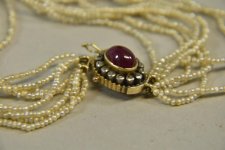
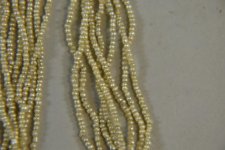
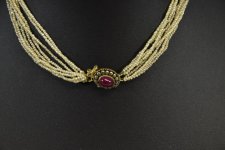
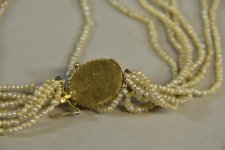
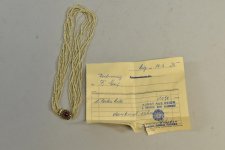
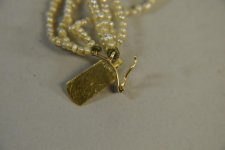
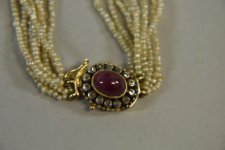
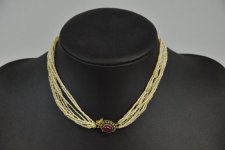 Hi, I am new here and I love old natural pearls.
Hi, I am new here and I love old natural pearls.



